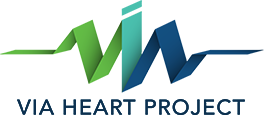What is SCA?
Sudden cardiac arrest (SCA) is often the result of a sudden, unexpected heart malfunction. During SCA, the heart’s electrical impulses become chaotic and ineffective and blood flow to the brain ceases. The victim will die unless a normal heart rhythm is restored.
What is a heart attack? Is SCA different than a heart attack?
Sudden cardiac arrest is not the same thing as a heart attack. The majority of heart attacks are due to a blockage in one of the arteries that supply blood to a specific area of the heart. When there is an interruption of blood flow to a portion of the heart, that part of the heart starts to die due to lack of oxygen. This results in the discomfort/pain a heart attack victim often feels in the days or hours before the incident. While the heart attack is happening, the victim is able to talk and respond to bystanders.
Who survives SCA?
SCA survivors typically have four things in common:
- A passing bystander recognizes the emergency, decides to help, confirms the victim is not responding, and makes sure that 911 is called.
- Someone begins CPR immediately—doubling the victim’s chance of survival.
- An automated external defibrillator (AED) is delivered to the scene ideally within three to five minutes and bystanders utilize it immediately. The device provides the life-saving shock (only when it deems it’s necessary) to the victim’s heart.
- Professional EMS personnel arrive early and provide advanced life-support care.
What is the first sign of SCA?
The first thing that happens to a SCA victim is they pass out. They stop breathing, although they may gasp or moan. Since the victim is no longer getting blood and oxygen to the brain, they have only four to six minutes before brain damage begins to occur, and soon after that, brain death. For each minute that passes without medical or bystander intervention, there is an incremental 10% decrease in the chance of victim survival. Even the best emergency response times are six to eight minutes, making the chance of survival low. The average national survival rate from sudden cardiac arrest is less than 10%.
How is SCA treated?
Cardiac arrest may be reversed if cardiopulmonary resuscitation (CPR) is performed on the victim within a few minutes and a defibrillator is used to shock the heart. This shock stops the heart from quivering and allows it to regain a normal rhythm. The shock must be administered quickly, before brain death begins. The definitive treatment for SCA is defibrillation. Early bystander intervention and access to defibrillation is the key to SCA victim survival.
How can AEDs in our community help improve survival from SCA?
SCA kills more Americans each year than breast cancer, lung cancer, prostate cancer, and AIDS combined. Places that offer easy access to CPR training, implement AED programs, and place AEDs at local parks, recreation centers, schools, sporting fields, and in patrol cars are model communities. They’ve witnessed their SCA survival rates jump as high as 60%! Access to bystander CPR and early defibrillation definitively saves lives!

Early
Access

Early
CPR

Early
Defibrillation

